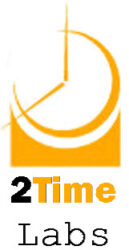 One of the key inspirations behind the 2Time way of thinking happens to be the time and motion techniques I learned as an undergraduate in Industrial Engineering.
One of the key inspirations behind the 2Time way of thinking happens to be the time and motion techniques I learned as an undergraduate in Industrial Engineering.
The idea behind the technique is simple – observe each physical motion taken by a person performing a task of some kind. Record it, and analyze it using some common sense, then experiment with improvements. Use metrics to determine whether or not the improvement is a valid one.
When I look at someone’s time management system, I naturally have an inclination to see what they are trying to do in “time and motion terms”, coming from my formal training in this area. This might be why the 11 components are observable, and when I think about habits I don’t think of principles like “Put First Things First”. Instead, I think of “brushing your teeth” or “smoking cigarettes”.
Seeing people’s habits broken down in this way makes things much easier to understand, and to appreciate. It also makes comparisons between different systems much easier to make. Continue reading “2time’s Time and Motion Basis”









